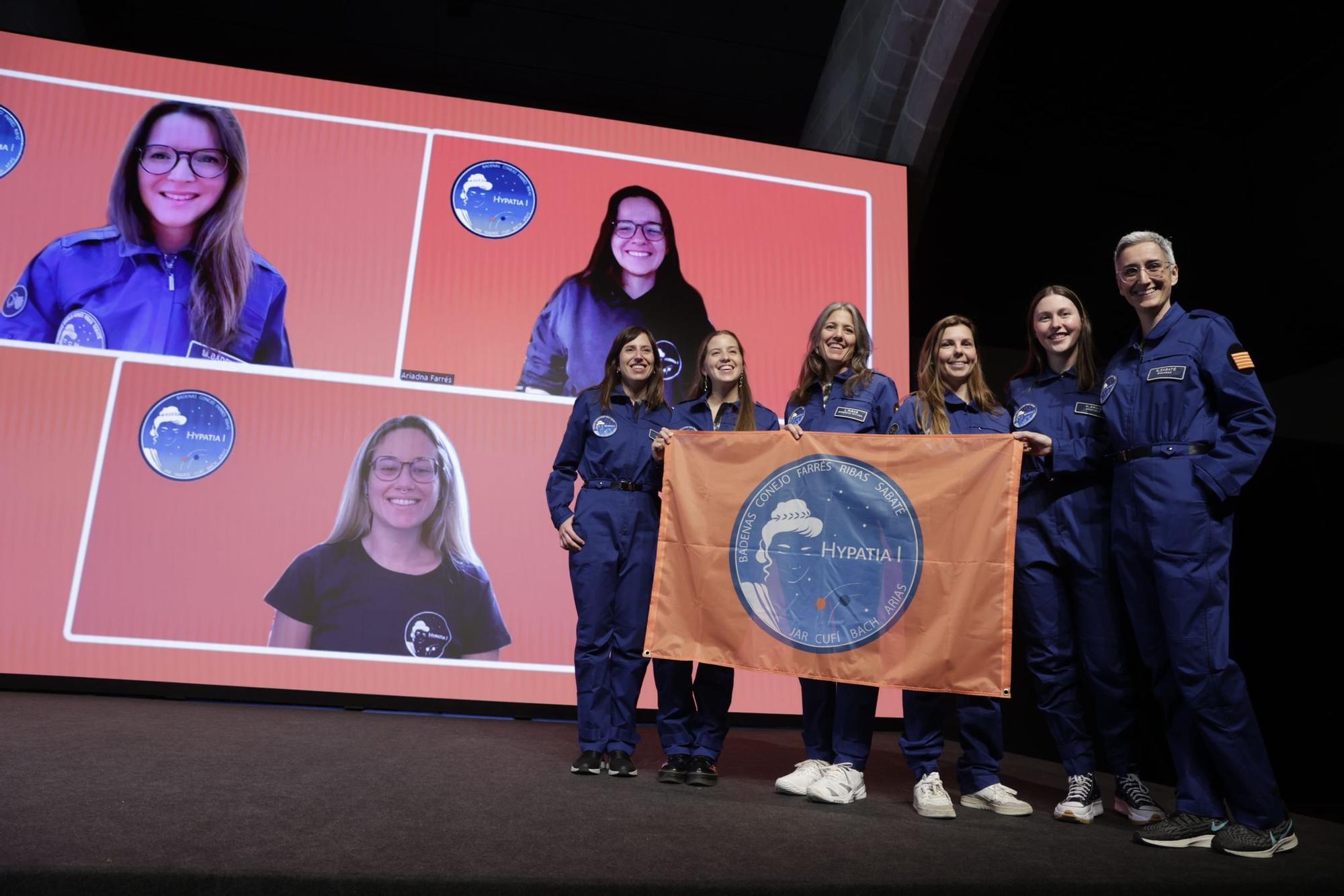Astronomers, engineers, biologists and journalists will embark on a project to simulate what life would be like on the red planet
We are about to witness the takeoff of a curious project: the hypatia missionan initiative led by nine Catalan scientists to study what life would be like on the red planet. The journey of these researchers will take them to a research station in the United States where they simulate the conditions of Mars. His work will remain, for now, on the earth’s soil, but one day his teachings could help the first earthlings who will set foot on the red planet.
These are the nine Catalan scientists who will star in the Hypatia project.
Mariona Badenas-Agustí, commander and astronomer
The mission will ‘take off’ under the command of the Catalan scientist Mariona Badenas-Agustí. This researcher is expert in astrophysics, cosmology and planetary sciences. In his curriculum you can read the names of institutions as detailed as Yale University, where he obtained his diploma in astrophysics, the Institute of Space Sciences of Catalonia, where he obtained his master’s degree, and the Massachusetts Institute of Technology (MIT), where he is now He is working on his PhD. Her research is currently focused on computational tools to study, on the one hand, the evolution of stars and, on the other, the search for worlds beyond the solar system.
Carla Conejo González, crew officer
The second in command of the mission will be the Catalan biologist Carla Conejo González. This scientist has experienced science from all angles. On the one hand, as a researcher, she has specialized in biotechnology and has worked on neurobiology projects at the Center for Genomic Regulation in Barcelona. On the other hand, as a scientific advisor, she has worked as a scientific advisor and documentalist for TV3, as well as director of scientific programs for the Fundació Catalunya La Pedrera. She is also the founder of the Polaris science travel app.
Ariadna Farrés Basiana, crew scientist and health and safety officer
The person in charge of the safety of the mission and the health of the crew will be the scientist Ariadna Farrés Basiana. This researcher comes from the field of applied mathematics and is specialized in astrodynamics and celestial mechanics. He currently works on the flight dynamics team at NASA’s prestigious Goddard Space Flight Center. She also supports the mission of the Nancy Grace Roman and James Webb Space Telescopes, the most powerful scientific instrument ever launched by our species.
Laia Ribas, manager of the GreenHab
One of the objectives of this Martian mission will be set up a greenhouse to study how plants will be grown on the red planet. This project, baptized as GreenHab, will be in charge of the researcher Laia Ribas. This scientist works at the Institute of Marine Sciences of the Higher Council for Scientific Research (CSIC). Her scientific career has focused on understanding what kind of factors determine the sex of fish.
Núria Jar, journalist on board
The journal on board the mission will be written in the handwriting of science journalist Núria Jar. Currently, this professional collaborates in programs such as ‘El Matí de Catalunya Ràdio’, in media such as the SINC Agency or the magazine ‘Muy interesante’ writing about topics related to science, health and the environment. One of its objectives on board this mission will be to document daily both the life of the astronauts on Mars and the progress of each of the experiments and projects that are launched on the red soil.
Neus Sabaté, team engineer
The renowned Catalan scientist Neus Sabaté will be in charge of test a new generation of Martian batteries. That is to say, energy sources that resist the inclemencies of the red planet. Sabaté will immerse himself in this mission using all his experience in the field of investigation. This scientist, in fact, comes from the field of physics, she works as an ICREA professor at the Institute of Microelectronics in Barcelona and is co-founder of Fuelium; a company dedicated to developing and marketing paper-based batteries for single-use portable devices.
Cesca Cufí Prat, engineer
The aerospace engineer Cesca Cufí Prat will be one of those in charge of studying the «cellular intelligence on the martian surface«. His mission will consist of studying the behavior of a curious single-celled organism known as a ‘blob’ to see how it reacts to red soil conditions. This scientist, specialized in space systems, obtained her undergraduate studies at the Polytechnic University of Catalonia and her master’s degree at the prestigious Institut Supérieur de l’Aeronautique et de l’Espace (ISAE Supaero). She currently works at Airbus Defense and Space developing high-precision instruments for Earth observation.
Anna Bach, scientist and artist
The researcher Anna Bach Valls, specialized in mathematics and computer science, will join the mission as a scientist and artist. In his more scientific facet, Bach works as a data analyst at the multinational company Scopely, where he uses machine learning techniques to understand user behavior. On her more artistic side, this researcher is responsible for the ‘Annet Planet’ project where she shares illustrations about women and science.
Helena Arias Casals, engineer
The last crew member of this mission will be Helena Arias Casals, student of mechanical engineering, electronic engineering and physics at the Polytechnic University of Catalonia (UPC) and at the National University of Distance Studies (UNED). This young woman, who combines her engineering studies with her sports career as an Olympic shooter, has received several research programs such as Joves i Ciència (Youth and Science) from the Fundació Catalunya La Pedrera, or the International Science Summer Institute (ISSI) from the Weizmann Institute of Science in Israel.

